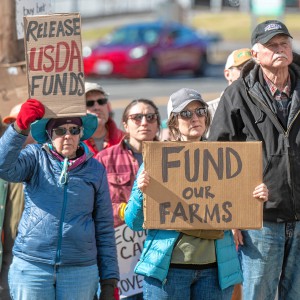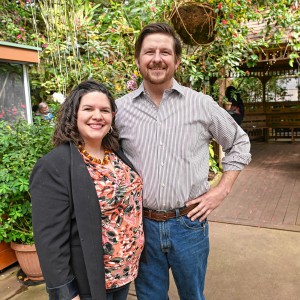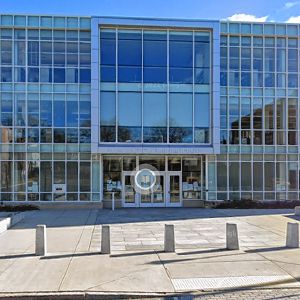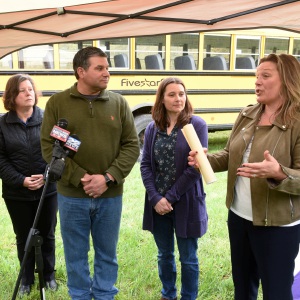Reports break down challenges facing emergency response managers across western Mass.

The Mill River flows under the bridge on Mulberry Street in Leeds during flooding and rain on Dec. 18, 2023. New reports published by the Berkshire Regional Planning Commission outline the challenges facing emergency response planners in the state’s four westernmost counties. STAFF FILE PHOTO
|
Published: 08-12-2024 5:45 PM
Modified: 08-12-2024 9:21 PM |
NORTHAMPTON — Emergency response planners have identified occasional protests and civil unrest, a large population of younger residents without local roots, and the possibility of Connecticut River bridge crossings being compromised, thus isolating people and preventing them from evacuating, as some of the hazards, threats and vulnerabilities potentially facing Hampshire County in the event of disasters large and small.
The second phase of the Western Regional Homeland Security Advisory Council’s Equity Data Project, completed at a cost of $35,000 using money from the state’s Homeland Security Grant Program and recently published by the Berkshire Regional Planning Commission, outlines the needs and challenges, during emergencies, for people living in the state’s four westernmost counties, with specific reports completed for Hampshire, Franklin, Hampden and Berkshire counties, as well as the 101 cities and towns.
For Lawrence Holmberg, the emergency management director for Chesterfield and Goshen, the reports will provide crucial information for better planning by using a snapshot of the area’s demographic trends.
As an example, Holmberg said if an influx of non-English speakers is occurring, planning can be done to better communicate with them through reverse 911 messaging and, when establishing an emergency shelter, providing culturally appropriate food.
“Language of understanding is one of the critical factors we don’t have a handle on,” Holmberg said.
Sandra Martin, a lead staff person on public health matters for the regional planning commission, said the project provides a “wake-up call” for emergency responders and those responsible for people’s well-being in the event of public emergencies.
“I think it was interesting to find that individuals who have specific needs are everywhere,” Martin said. “This gives them a sense of the range of issues they should be aware of during emergencies.”
Martin said the data collected shows those who are most affected during emergency incidents are generally poorer, living with disabilities, and tend to be alone, being also most likely to use and remain at emergency shelters when they are made available.
Article continues after...
Yesterday's Most Read Articles
 Northampton Housing Authority boss placed on leave
Northampton Housing Authority boss placed on leave
 NCAA Div. 1 Men’s Ice Hockey: UMass stuns Minnesota 5-4 in OT, advances to regional final
NCAA Div. 1 Men’s Ice Hockey: UMass stuns Minnesota 5-4 in OT, advances to regional final
 UMass Men’s Basketball: Three Minutemen enter transfer portal
UMass Men’s Basketball: Three Minutemen enter transfer portal
 Putting themselves on the line: Activists say nonviolent protests focus attention, inspire others, drive change
Putting themselves on the line: Activists say nonviolent protests focus attention, inspire others, drive change
 Ready to roll on roads: Amherst priority list tees up $4.55M to rebuild some of town’s worst stretches
Ready to roll on roads: Amherst priority list tees up $4.55M to rebuild some of town’s worst stretches
 USDA yanks $3.4M in aid to state food banks
USDA yanks $3.4M in aid to state food banks
In its August newsletter, the advisory council, which brings together public safety, public works, transportation, health and education professionals from throughout the region, including Holmberg, writes, “Emergency management directors and other municipal officials creating emergency response plans will find the reports valuable as they consider ways to meet the needs of all people in their municipality.”
Holmberg said emergency preparedness for the senior population during weather events can be as simple as setting up cooling or warming centers, but could be as elaborate as ensuring an evacuation, which for small towns with virtually no public transportation might entail coordinating with the Pioneer Valley Transit Authority, private contractors and volunteers.
“How do we get people to move and how do we move those people?” Holmberg said. “It’s how to proceed in an organized fashion when chaos reigns.”
A general overview of the project mentions some of the surprising findings, including that larger cities appear to be better prepared to deal with individuals with equity issues, since these communities already have a robust infrastructure of private and public organizations and agencies providing social services, while rural residents seem more prepared for natural disasters, even with the towns they live in having fewer resources, such as paid staff.
Martin said that the report also indicates there is a higher cost to serve the populations in rural areas, largely due to the distance these people live from services.
There are also many conclusions drawn in the report from interviews. This includes a consensus that more housing options are needed everywhere, and that most emergency management directors and boards of health already consider equity as a normal part of their job in meeting residents’ needs and saving lives.
For western Massachusetts, there are several themes regarding hazards that can be encountered, including extreme weather and events causing power outages and flooding dangers; outbreaks and pandemics that can overwhelm medical systems; influxes of evacuees and visitors who may overwhelm local services and infrastructure; and general inequity for rural towns that are far from the seats of power.
For Hampshire County’s 162,308 residents, the report notes that people in small towns are more likely to shelter in place and may be unwilling to evacuate; concerns with cybersecurity depend on volunteers or untrained staff; a stigma is associated with food insecurity; and that there are often staffing shortages among essential workers.
But the report also points out that most of Hampshire County’s households have a median household income at or above the state median, even with ongoing concerns with homelessness and people who are overly rent-burdened. Other equity concerns are related to socioeconomic status include single-parent households possibly needing additional assistance in an emergency, and food deserts in the eastern part of the county.
“Hampshire County has a significant number of people living with a disability or who do not speak English as a first language. It also has a large elderly population,” the county report states. “These individuals are at higher risk in emergencies as compared to the general population. There are also local concerns about public transportation and areas with limited cell service.”
The report continues: “Hampshire County, in particular Northampton, experiences high rates of mental health hospitalizations and overdose concerns, which have been compounded by the pandemic and ongoing opioid crisis.”
And with more than 1,000 people reliant on power for their medical devices, “Northampton has a large National Grid site that provides electricity to the hill towns. Were this electrical hub to be damaged, areas in the hill towns and Northampton would be left without power.
“According to interviews, the elderly population in Northampton would not have enough food supplies if there was an emergency that required them to shelter in place.”
Other concerns include whether cell service is adequate for the elderly or those who have English as a second language. “In addition, there is a risk of civil unrest, especially near the Five Colleges, where police staffing may already be inadequate.”
Community-by-community statistics follow from the countywide report, showing that 2,162 county residents, for example, 1.3% of the population, don’t have a vehicle. There also are breakdowns, such as that Amherst has almost double the Hampshire County average of people living below the poverty level, at 19.2%, or 6,246 residents, compared to 10.4%, or 16,890 county residents. While nearly a quarter of Hampshire County residents 65 and over live alone, in Amherst the percentage of seniors living alone is over almost a third.
Northampton’s population is in line with the averages, with an outlier being nearly double the percentage of people without a vehicle, with 667, or 2.4%. Northampton also has more people with self-care difficulty, with 6,627 residents, or 23.5% of population, compared to 9,184 residents, or 5.6%, of overall Hampshire County.
Easthampton’s charts show that the population is older and has a lower median household income than the rest of the county, while in Holyoke, challenges include that 38.5% of children under 18 are living in poverty.
Scott Merzbach can be reached at smerzbach@gazettenet.com.






 Hopeful buyers emerge for Magic Wings butterfly conservatory in South Deerfield
Hopeful buyers emerge for Magic Wings butterfly conservatory in South Deerfield Area briefs: Mount Holyoke’s Trailblazers of Color conference; Holyoke Library to host annual mini golf and games; Westfield State launches paramedic program
Area briefs: Mount Holyoke’s Trailblazers of Color conference; Holyoke Library to host annual mini golf and games; Westfield State launches paramedic program  Legislation inspired by a Leverett family allows school bus monitoring systems
Legislation inspired by a Leverett family allows school bus monitoring systems
